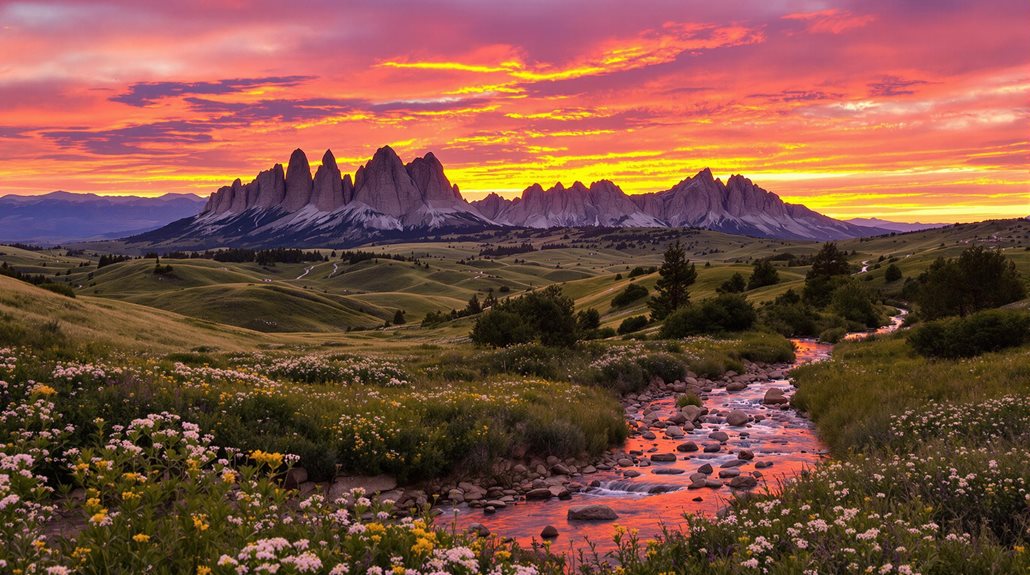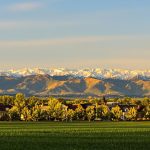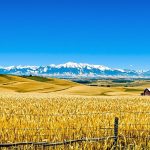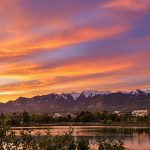Boulder County, Colorado, encompasses a diverse landscape of mountains, plains, and natural troughs, featuring iconic formations like the Flatirons and Rocky Mountain National Park. With over 330,000 residents, it boasts a strong research environment fueled by the University of Colorado Boulder and federal labs. The county's economy thrives on industries such as aerospace and IT. Outdoor enthusiasts benefit from extensive open spaces and trails. Continuing to explore this dynamic region reveals a complex interplay of nature, culture, and technological innovation.
Expert Highlights
- Boulder County spans 740 square miles, including mountains and plains.
- It features iconic formations like the Flatirons and Rocky Mountain National Park.
- The county hosts Arapaho and Roosevelt National Forests.
- Economic drivers include aerospace, bioscience, and cleantech industries.
- Outdoor activities abound with 300 miles of trails and open spaces.
Geographic Landscape
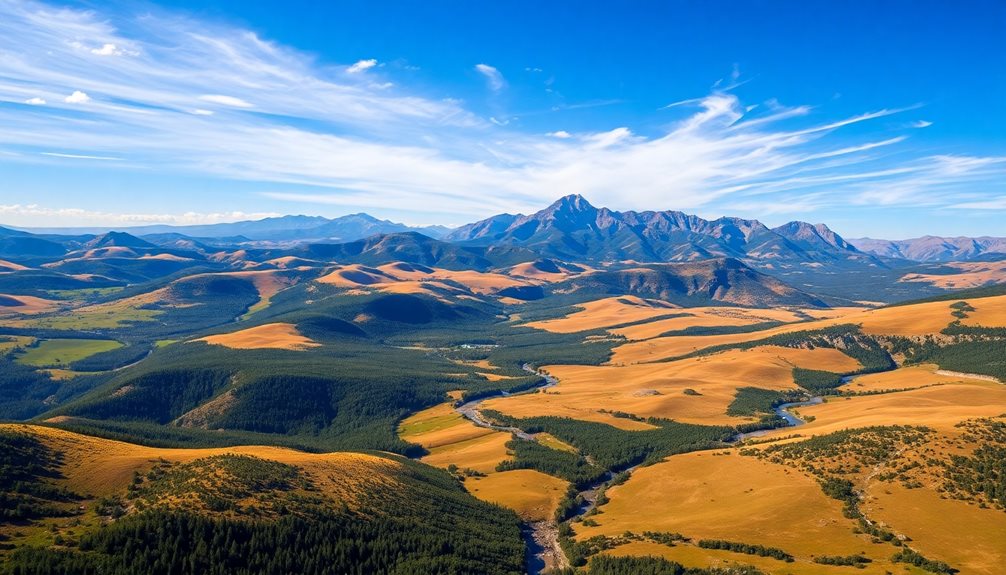
Boulder County, Colorado, presents a rich geographic tapestry that spans three distinct zones: the mountainous terrain in the west, the expansive plains in the east, and a natural trough that connects these zones, offering a diverse landscape of rugged beauty and multifaceted ecosystems.
The county includes iconic formations like the Flatirons and is home to parts of Rocky Mountain National Park. It covers 740 square miles, with 726 square miles being land and 14 square miles of water.
Major national protected areas include the Arapaho and Roosevelt National Forests and Indian Peaks Wilderness. The vibrant city of Longmont Colorado sits within this diverse landscape, offering residents and visitors direct access to the county's natural wonders.
History and Settlement
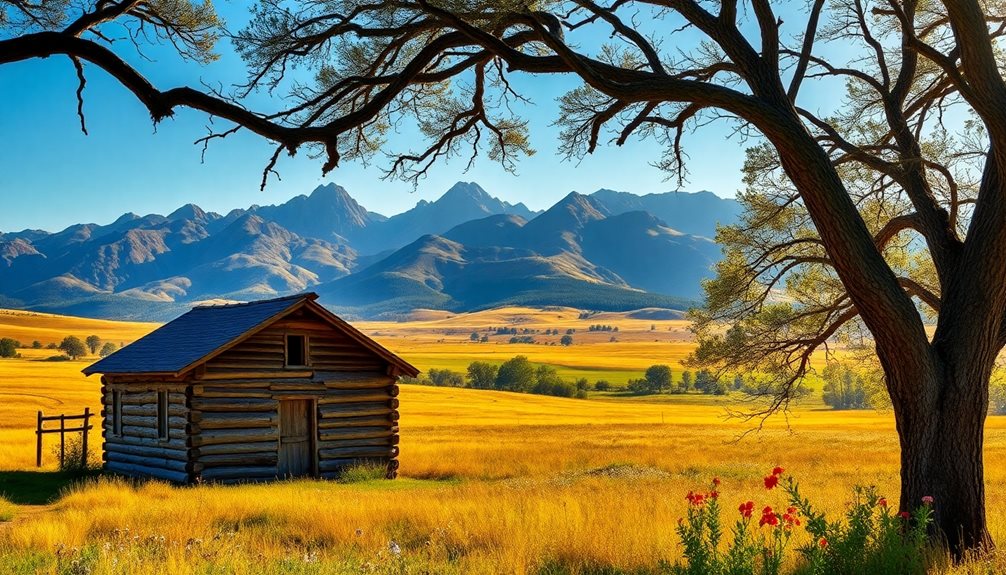
The geographic diversity of Boulder County's landscape provides a backdrop for a rich historical narrative. Alongside its natural attributes, human settlement has shaped the area's identity. The county was inhabited by Indigenous tribes like the Arapaho and Ute before Euro-American settlers arrived. Similar to Limon's early settlement, the region underwent significant transformation as newcomers established communities.
| Era | Event | Impact |
|---|---|---|
| Pre-1800s | Indigenous tribes inhabited | Cultural and ecological |
| 1800s | Euro-American settlement | Economic transformation |
| 1858 | Gold discovery | Prospecting and town formation |
| Late 1800s | Agricultural and coal mining | Economic diversification |
Economic and Cultural Features
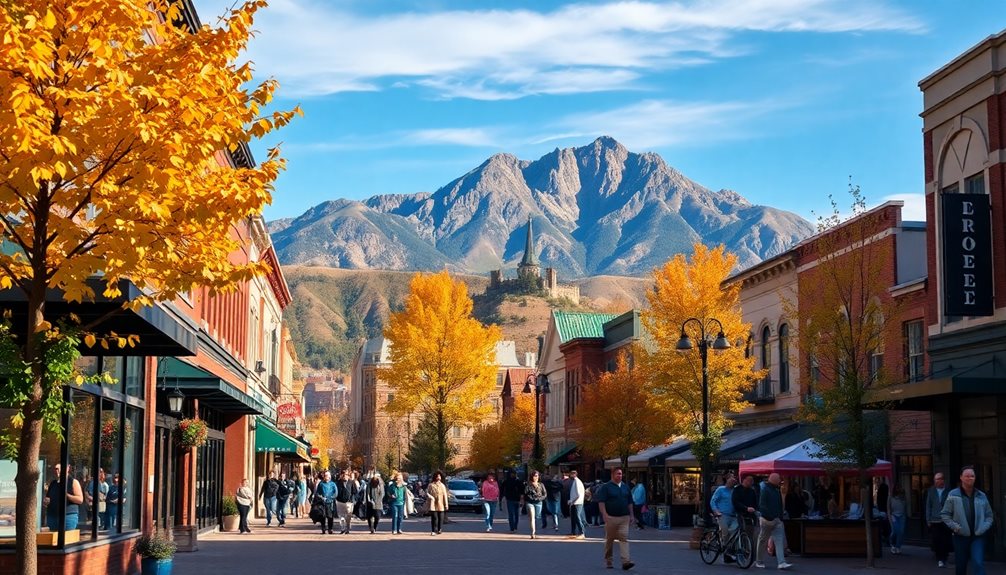
Economic diversity and cultural richness are hallmarks of the region, where a blend of industries such as aerospace, bioscience, cleantech, and IT drive local and national economies.
Boulder's economy is supported by a strong research environment, including the University of Colorado Boulder and numerous federal labs.
Cultural features include a vibrant arts scene and outdoor recreation, drawing from the area's natural beauty.
Pressing challenges like housing affordability and workforce development require innovative policies to guarantee sustained growth.
Recreational and Educational Opportunities**
As the demands for balanced lifestyles continue to grow, communities like those in Boulder County, Colorado, offer an intriguing blend of recreational and educational opportunities. The county boasts 300 miles of trails and 46,000 acres of open space, fostering a vibrant outdoors culture.
| Activity | Location | Description |
|---|---|---|
| Hiking | Chautauqua Trailhead | Scenic views of the Flatirons |
| Biking | Boulder Creek Path | Family-friendly routes |
| Skiing | Eldora Mountain Resort | World-class skiing experiences |
Outdoor Pursuits at CU Boulder also offers educational courses, enhancing skill-building for various outdoor activities.
Expert Final Thoughts
Boulder County, Colorado, offers a rich tapestry of geographical features, including the Flatirons and vast open spaces, which support diverse ecosystems. Its history is marked by early gold prospecting and Native American presence. Economically and culturally, the region is known for its liberal policies and environmental focus. Recreational opportunities abound with hiking trails and scenic vistas, while educational institutions like the National Center for Atmospheric Research contribute to its academic profile.

